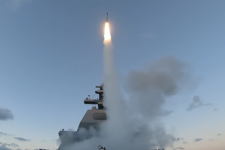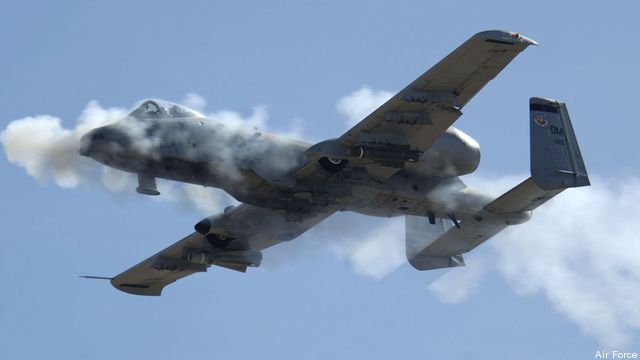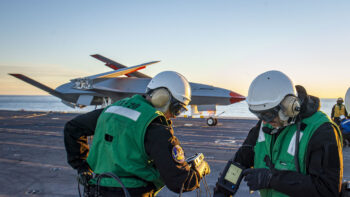CAPITOL HILL: While the federal government remains supine and Congress fails to pass appropriations bills, at least one lawmaker is engaged in a classic use of senatorial privilege: placing a hold on the nomination of a senior administration official.
Sen. Kelly Ayotte, who has made clear her unease with what appears to be the Air Force’s intent to scrap the entire fleet of the beloved and ugly 326 A-10 close air support jets, told the service today she would not let the nomination of Air Force Secretary nominee Debbie Lee James proceed. Why? Answers to questions she posed to the service about the A-10 were “insufficient.” She has sent follow-up questions to the Air Force.
“As Ranking Member of the Senate Armed Services Readiness Subcommittee, Senator Ayotte’s central concern is that our troops have the close air support they need to accomplish their missions and return home safely. The A-10 has saved many American lives, and Senator Ayotte is concerned that the Air Force might prematurely eliminate the A-10 before there is a replacement aircraft-creating a dangerous close air support capability gap that could put our troops at risk,” a congressional aide said on background.
This isn’t really about the quality of the Air Force responses, which probably said no final decisions had been reached since the next fiscal year’s budget isn’t final yet. (I bet they even used that fabulous and most hated term that no decent person would ever use — pre-decisional.) This is all about the Air National Guard (which flies almost one third of the A-10 fleet) and deep-seated suspicion that the F-35A, due to replace the A-10 in its close air support role, just isn’t nearly as good as the Warthog at flying low and killing tanks, other military vehicles and even troops on the ground.
Air Force Times recently ran this compelling account of a recent A-10 sortie:
In July, the A-10’s capabilities were evident when two pilots came to the rescue of 60 soldiers during a convoy ambush in Afghanistan.
The convoy came under attack while patrolling a highway. They became pinned behind their vehicles, facing heavy fire from a close tree line. The group didn’t have a JTAC, but a joint fire observer was able to communicate an estimated location to the A-10s.
“I flew over to provide a show of force while my wingman was looking for gunfire below,” the flight lead said, according to an Air Force release on the mission. “Our goal with the show of force was to break the contact and let the enemy know we were there, but they didn’t stop. I think that day the enemy knew what they were going to do, so they pushed even harder and began moving closer to our ground forces.”
One A-10 fired two rockets to mark the area with smoke. The wingman came in next and pulled the trigger on the Avenger cannon. The enemy moved closer to the friendly forces.
“We train for this, but shooting danger-close is uncomfortable, because now the friendlies are at risk,” the second A-10 pilot said. “We came in for a low-angle strafe, 75 feet above the enemy’s position and used the 30-mm gun — 50 meters parallel to ground forces — ensuring our fire was accurate so we didn’t hurt the friendlies.”
Of course, F-35 advocates would note that the plane possesses stunning sensors (far better than anything the A-10 will ever have) that allow the plane to operate at higher altitudes with excellent precision. They would also point out it can carry a heavier weapons load (18,000 pounds) than can the A-10 (16,000 pounds). Of course, the A-10’s 30 millimeter machine gun is one of the world’s most formidable ground attack weapons, far more potent than the F-35’s 25 mm gun, and the F-35 cannot carry nearly as much ammunition as the A-10 does (180 rounds vs. 1,170 rounds).
Then there’s the indelible impression the A-10 makes on ground troops. The good guys love the fact it flies low and slow. And they adore the impressive sound of the machine gun as it unloads its rounds into the enemy, not to mention the effect of the rounds that spew forth. The enemy hates all of those things.
A-10 pilots are also encased in a titanium tub that protects them from ground fire, allowing them to feel much more confident as they stare down at the enemy. We won’t really know how successful the F-35A is at its ground support role until JTACs guide some in and they have to do the dirty work the A-10 does so well.
The A-10 isn’t alone in facing the axe. The Air Force is considering scrapping its fleet of KC-10 tankers, F-15C fighter jets and the planned $6.8 billion purchase of new combat search-and-rescue helicopters.
The Air Force leadership made clear at last month’s Air Force Association conference that they wanted to cut weapon systems that have only one role, even if those systems perform that role fabulously well. It’s all part of the increasingly desperate push to find big enough savings to either forestall or meet the demands of the mandatory budget cuts known as sequestration. The fight over the A-10 will only be one of many come February, when the new budget is rolled out.
Lockheed wins competition to build next-gen interceptor
The Missile Defense Agency recently accelerated plans to pick a winning vendor, a decision previously planned for next year.




























